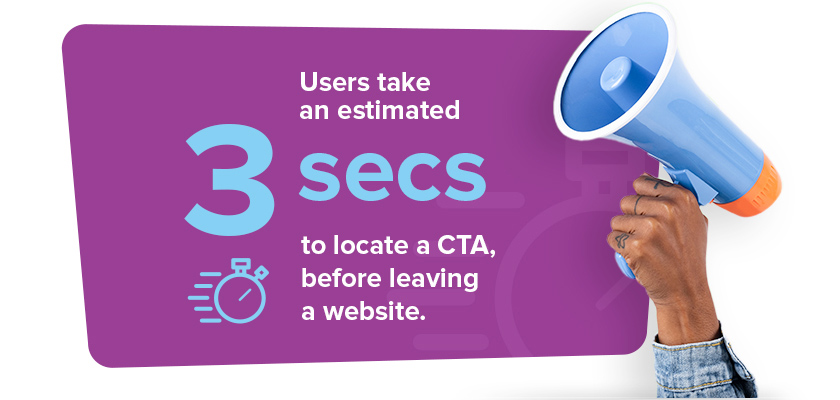
Does Your Marketing Appeal to Millennials? Engage the Emerging Leaders in Your Industry
If you are a B2B marketer and you haven’t considered targeting the millennial audience, now’s the time. Targeting this demographic has become even more important as these individuals mature in the workforce and move into leadership roles.
Their opinions and experiences are likely to have a large effect on the way you do business. Here are some professional steps you can take to better engage with these audience members and increase your marketing performance. Tactical strategies include optimizing social media, personalizing experiences, using web-friendly design, and more.
Deliver on Authenticity
Millennials can quickly identify whether a brand is posting authentic or inauthentic content online. They’ve grown up with a whole lot of sub-par, sensationalist advertising and are therefore more skeptical.
The good news? There’s a lot of room for improvement and social media is a great way to grab millennials’ attention. This audience often uses social media to decipher whether a business is legitimate. Developing a clear brand identity and authority starts with cleaning up your social media – Millennials, by and large, won’t believe in your professionalism or authority otherwise.
Historically, B2B companies have used social media less than B2C companies. However, this is changing as businesses realize they need to be where their customers are.. Now, 97% of B2B marketers use LinkedIn to promote their content and remain top of mind to their customers and prospects. As the social media epicenter of industry news, job search, and professional networks, LinkedIn is the preferred platform for B2B marketers. If you want to get a quick start on LinkedIn, ensure you have a company page that is complete and connects all your employees and services Post your content regularly on your company page and write content specifically for the LinkedIn audience.
Social Media Is the New Authority
Millennials are often associated with excessive social media use. Despite the cliche, there’s a useful insight here: compared to other age groups, millennials are particularly social media savvy. In 2020, the University of Oxford found that 40% of people between 18-24, used social media to get their news fix. Interestingly these results held true across the globe.

Millennials follow news stations, news anchors and share news articles on their social media profiles. In another survey, it was found that 66% of 17,000 millennials, influencing business decisions, used social media at work, whereas 36% used social media to keep up with industry news.
So you might be thinking, how does news media relate to my business? Well, technically it doesn’t. However, once you recognize the faith that millennials place in social media, you can begin leveraging individual platforms whether it be LinkedIn or Twitter, to demonstrate your credibility, professionalism, and authority. Share relevant industry news or comment and add trending hashtags to news stories you want to be associated with.
Share Values to Increase Brand Loyalty
In 5WPR’s 2020 Consumer Culture Report, it was found that 83% of millennial consumers were looking to purchase from brands that align with their values and 76% of this group reported that they wanted CEOs to speak out on issues they cared about. In the past, businesses that talked about issues such as veganism, carbon neutrality, equality, and climate change were seen as high-risk. Now, speaking about these issues will align your business with these values and endear your brands to like-minded customers. Leveraging meaningful topics like these will resonate specifically with millennials who are seeking authentic marketing.
Not sold? Here’s some inspiration. Liquid Death, an LA-based start-up, selling mountain water in recyclable aluminum cans saw a huge gap in the market for sustainable consumer products. Since their inception in 2017, they have not shied away from their in-your-face marketing approach, using gothic brand packaging and black humor to express the urgent need for more sustainable solutions.
The company’s tagline epitomizes their brand identity: ‘Murder your thirst’ – a tongue-in-cheek salute to our survival need for water the devastating impact of climate change on our earth. As a result, they’ve raised more than $50 million from backers including Live Nation. Liquid Death’s bottled water is now sold in more than 16,000 locations across the US including, Whole Foods and 7-Eleven.
Millennials Expect to Be Able to Talk to Brand
One of the key differences in marketing to millennials vs baby boomers (and even Gen X), is that millennials expect to be able to have a two-way conversation with brands. This includes the ability to tweet a company or chat and contact on Facebook or interact with a chatbot. Although businesses may consider this more of a sales or support role, these interactions impact the whole brand experience. Even if you have the best product or service, millennials are less likely to purchase if they don’t get their questions answered in a timely manner wherever they are (Facebook, Linkedin, or on your website).
Make It Personal
Millennials have grown up with sensationalist marketing, so they know how to tune out the noise. While skepticism remains high, the good news is that they are open to unique, personalized marketing experiences. Compared to 33% of boomers, 51% of millennials were found to believe marketing experiences should be personalized to them. And more, 74% of this group felt frustrated when they came across content such as website copy that wasn’t personalized. A non-personalized website experience results in high bounce rates as users scan the page and leave. Email content that is not relevant will have low open rates and high unsubscribe rates. If businesses are going to spend time and effort marketing, then they need to ensure it’s the right message for the right audience — at the right time.
Here are some tips that you can use to help drive more personalized experiences for consumers.
- Suggest personalised products or services that appeal to millennial consumers
- Personalise subject headlines in emails with users’ names
- Follow up with a personalised message that thanks consumers for their purchase
- Create clear call to actions ( on websites and in social media advertising to provide intuitive online experiences.
Personalization makes customers feel like you’re marketing your product or service to them specifically. It creates a level of intimacy and trust with your customers and can increase brand loyalty by 28%.
Follow Your (UX) Intuition
Millennials have high expectations of brands when it comes to delivering user-friendly design. Without UX, you risk losing buyers. Here are a few ways you can optimize your brand’s web experience to keep your users happy:
- Use visible buttons with copy that describes the action. Avoid “Click here” and instead try things like “Discover why”, “Learn how”, or even “Learn more”.
- Write appropriate headings to guide the eye and break up lengthy text
- Write bullet lists (like this) to highlight or summarise important information
- Use relevant hyperlinks that provide users with relevant information and make sure those links open in a new window so as not to lose your website visitor
- Optimise your website for mobile (make sure it’s legible and design-friendly)

Delivering a seamless, intuitive path to ‘checkout’ or to ‘learn more about your business product or service is crucial to sustaining millennials’ motivation to become a customer. It’s estimated that customers take an average of 3 seconds to find a CTA, before giving up and leaving a web page. A clearly accessible CTAs will reduce your bounce rate and increase conversions. One useful tip to maintaining consumers’ attention (and their motivation to buy) is to map out the user journey from your ad to your landing page, all the way through to your page after the CTA.
Picture yourself as one of your customers and challenge yourself to direct users to where you want them to go in just one click. This strategic approach will help you strip back any unnecessary steps in the customer journey and increase your click-through rate. Consider using user explanations or product descriptions as a helpful guide for customers.
Not only is quality web design a great way to deliver your audiences’ needs and expectations, but it’s also a great way to improve SEO to enhance your business’s visibility online. Thoughtful web design increases engagement which has a positive knock-on effect for SEO. Positive user experiences will create lasting impressions and earn new customers.
Once we immerse ourselves in the millennial perspective, we can appreciate this group’s shared values and behaviors more fully. We can leverage key features that resonate with this audience to create meaningful experiences and increase ROI. As this age group moves into decision-making roles, it’s more important than ever to keep the millennial mindset in mind when crafting communications. Contact The Walk to review your web experience and customer journey through the eyes of a millennial.























